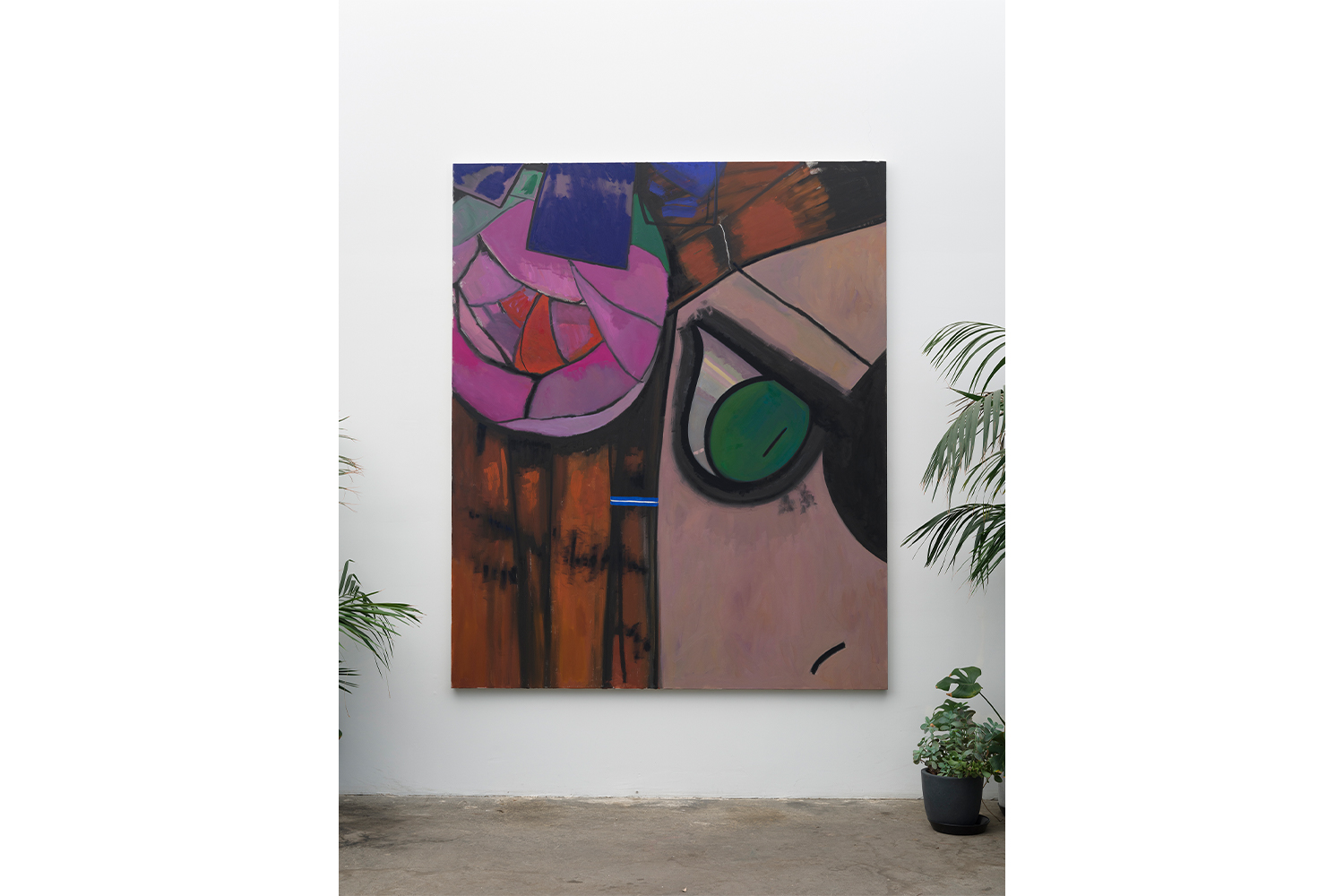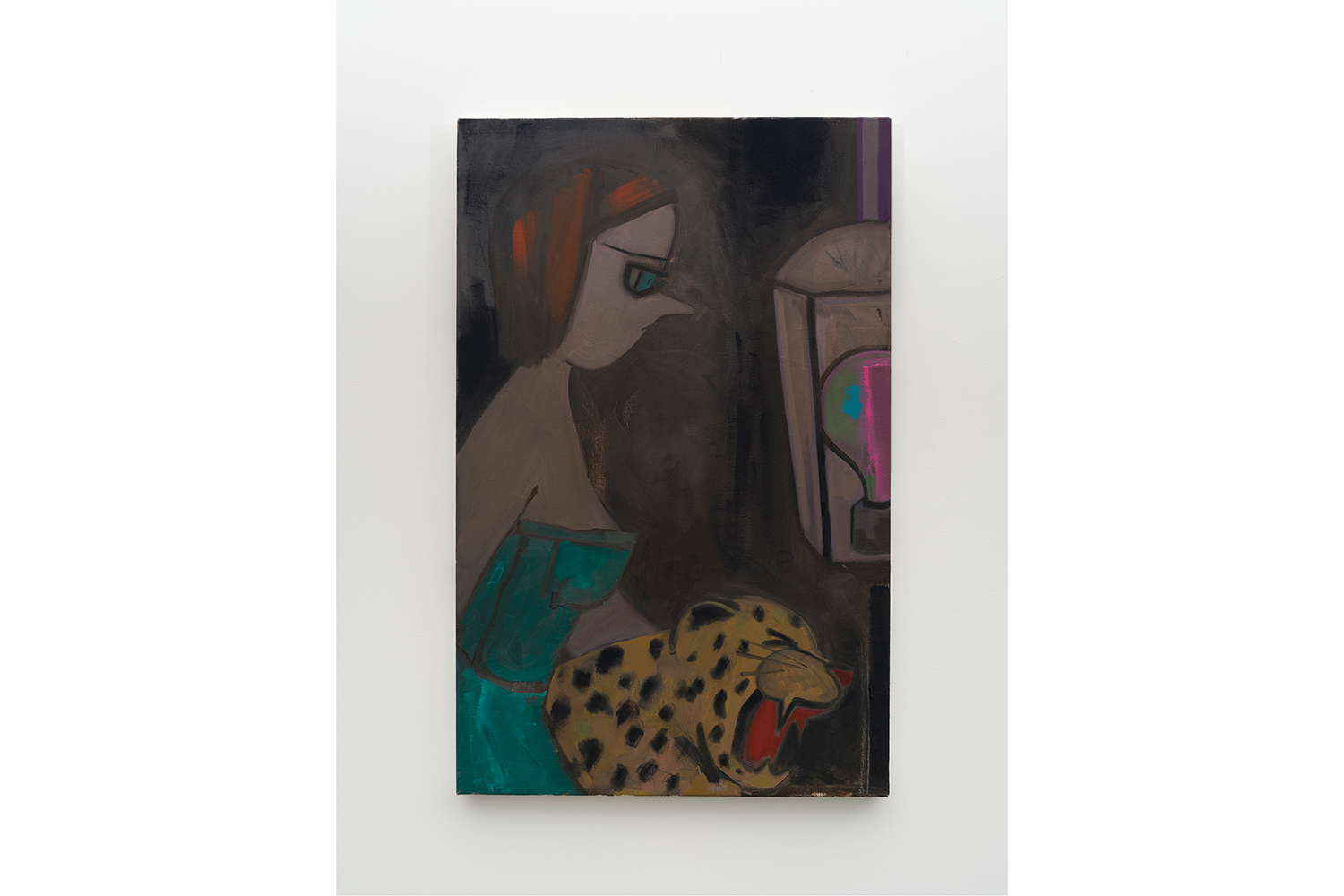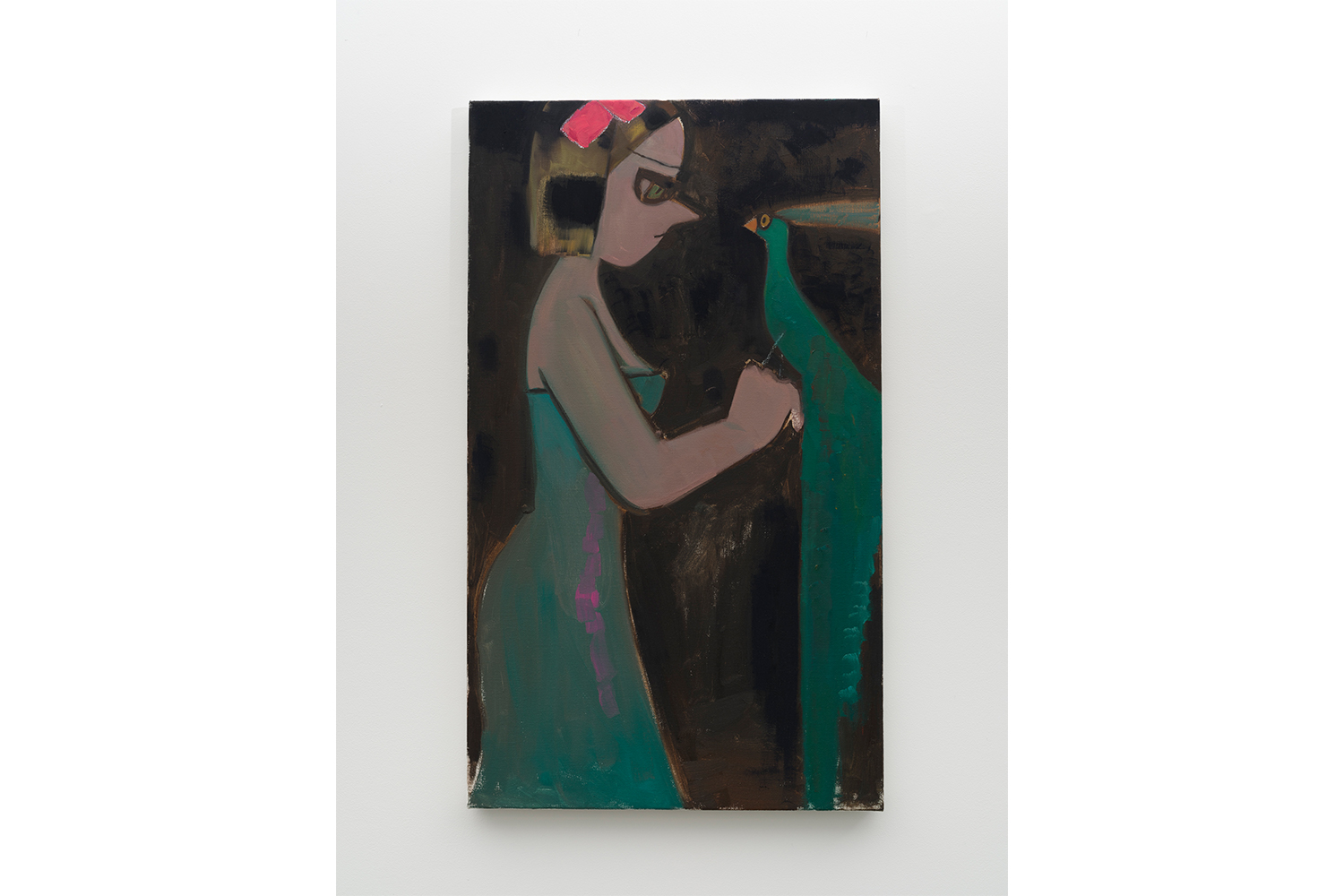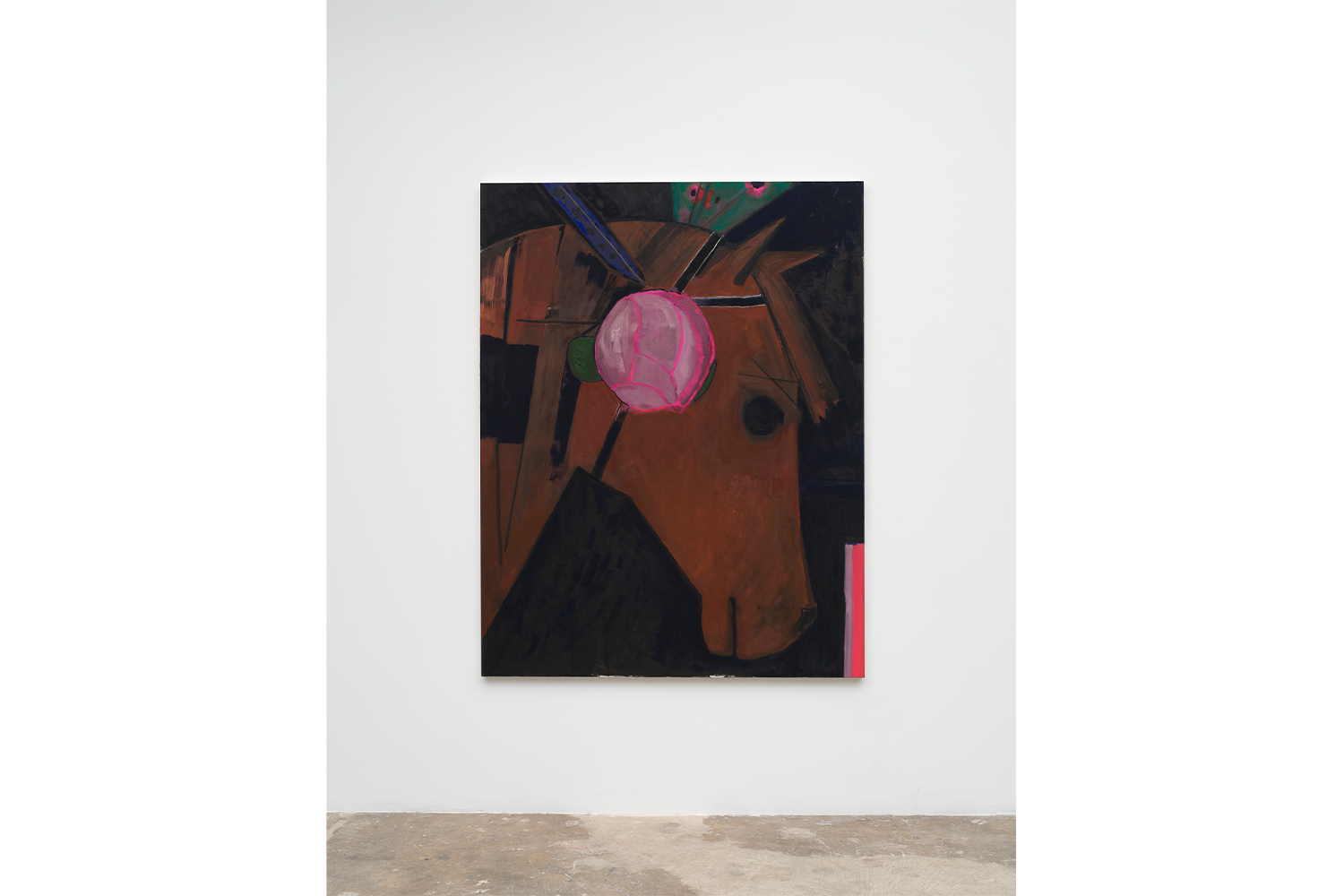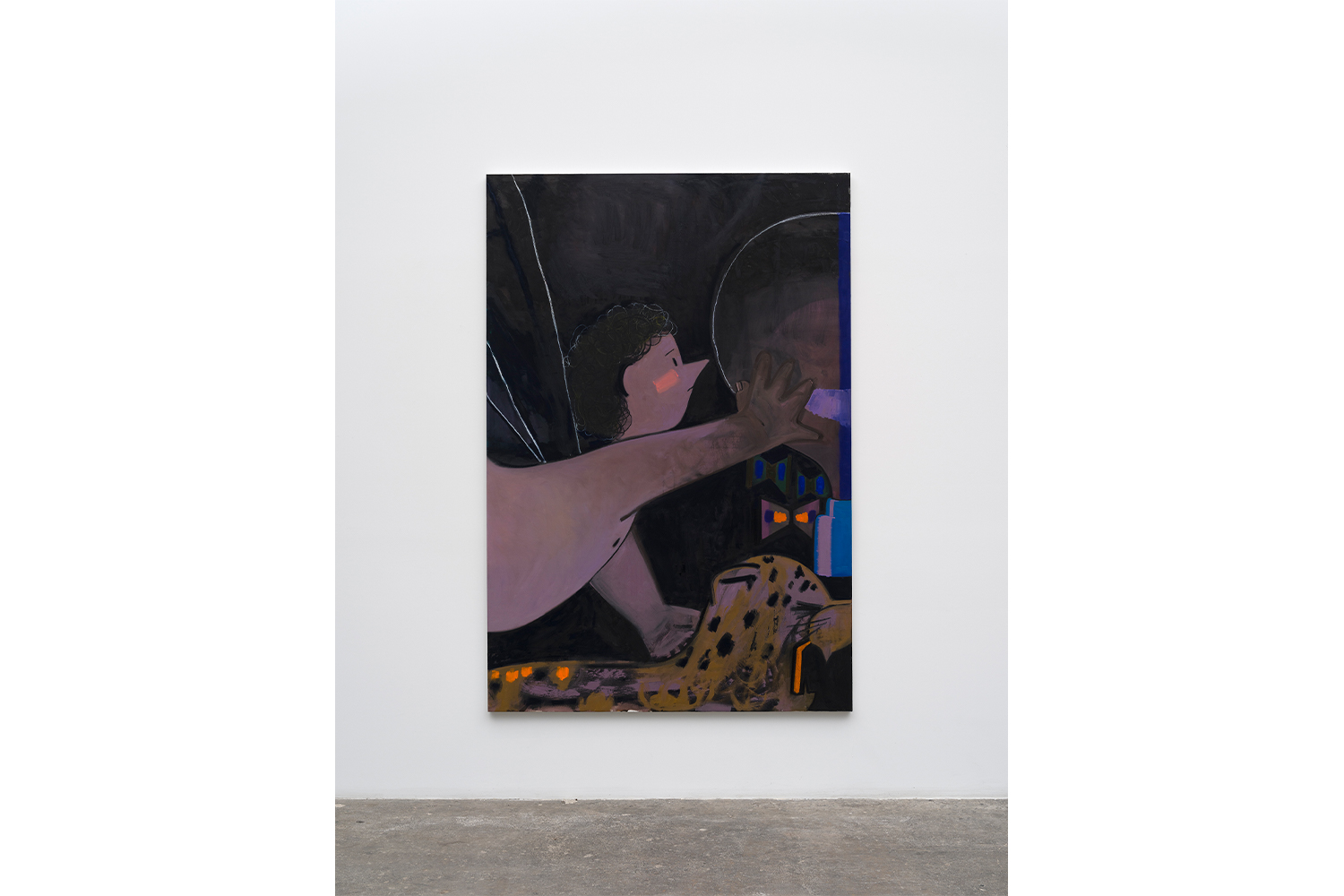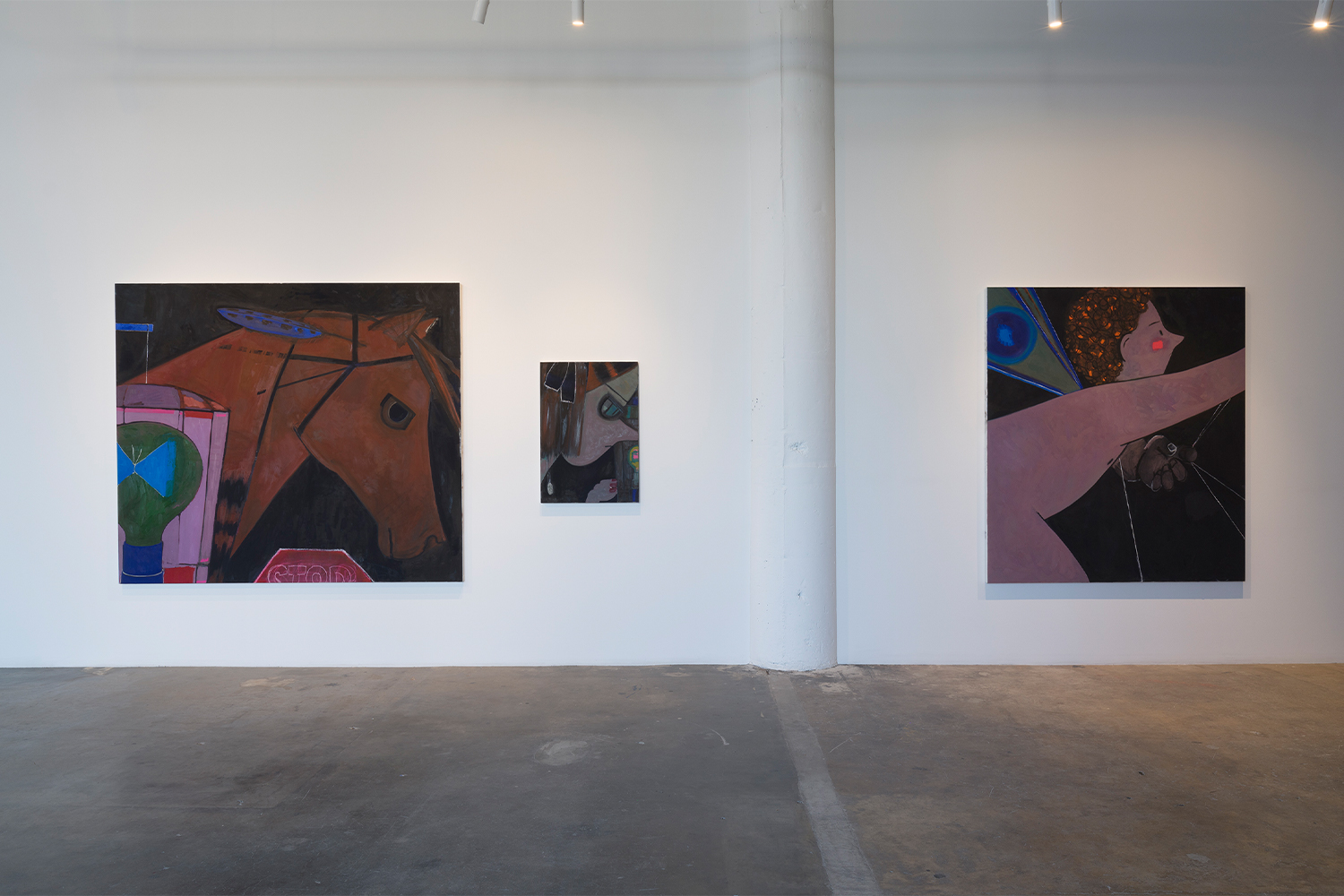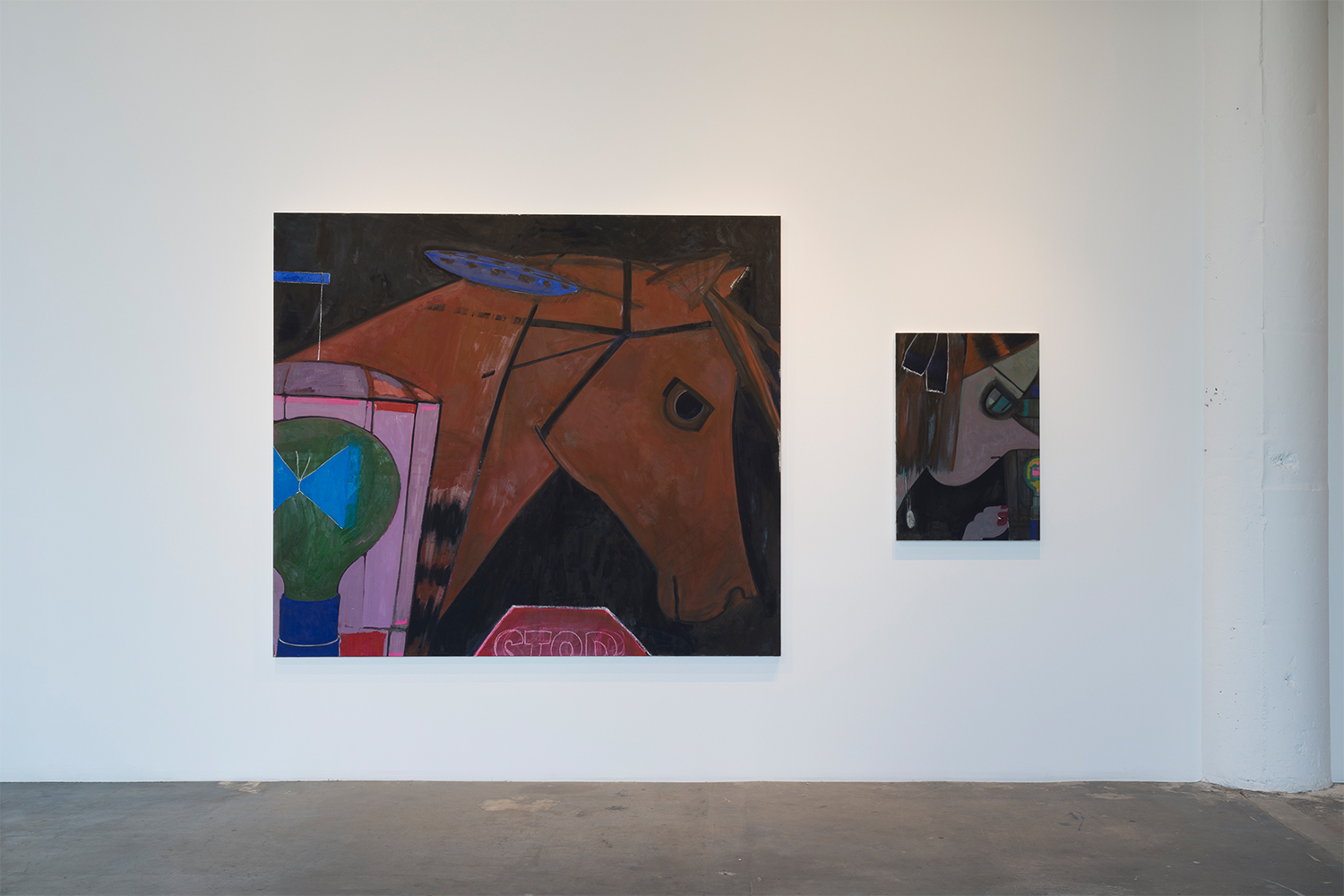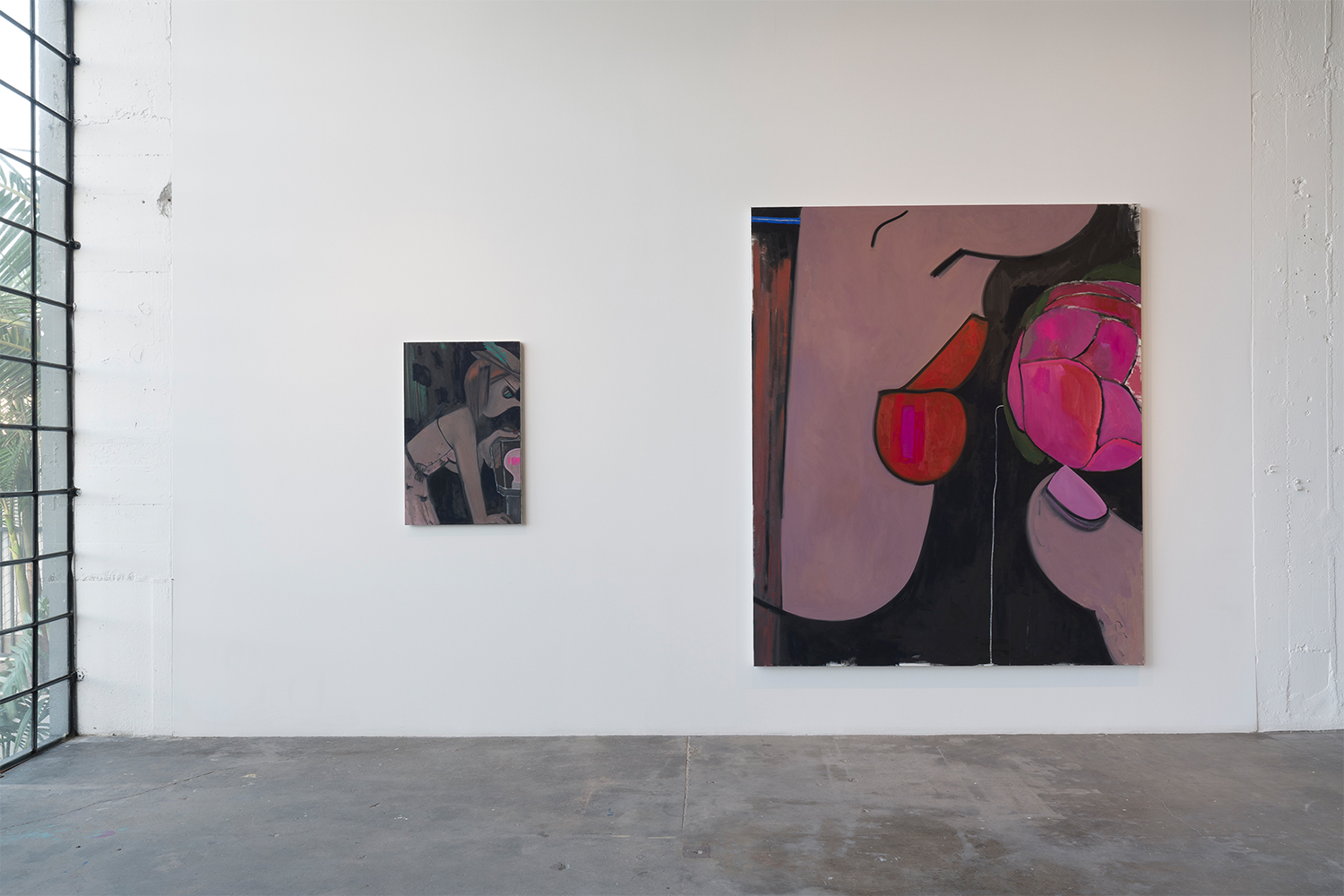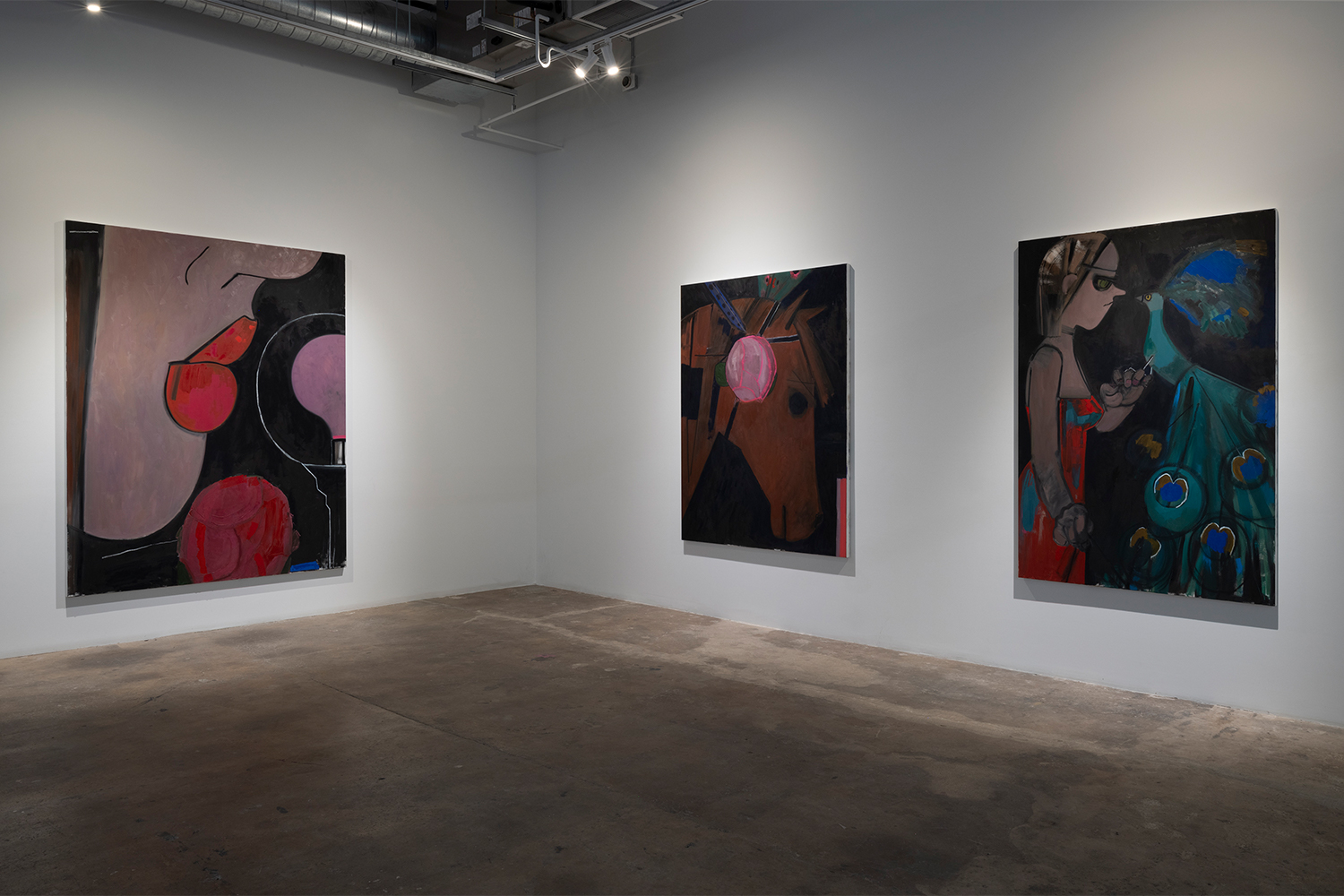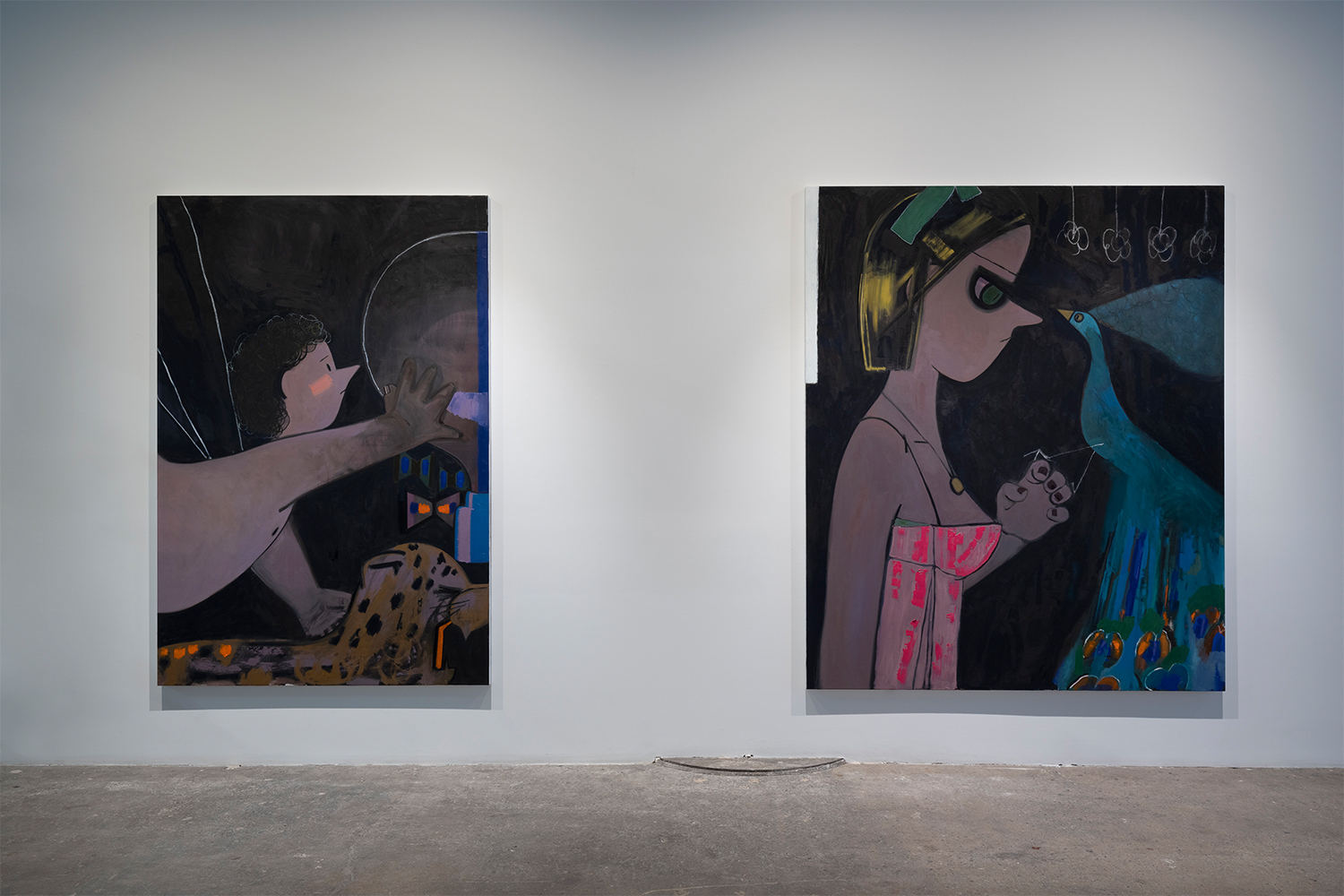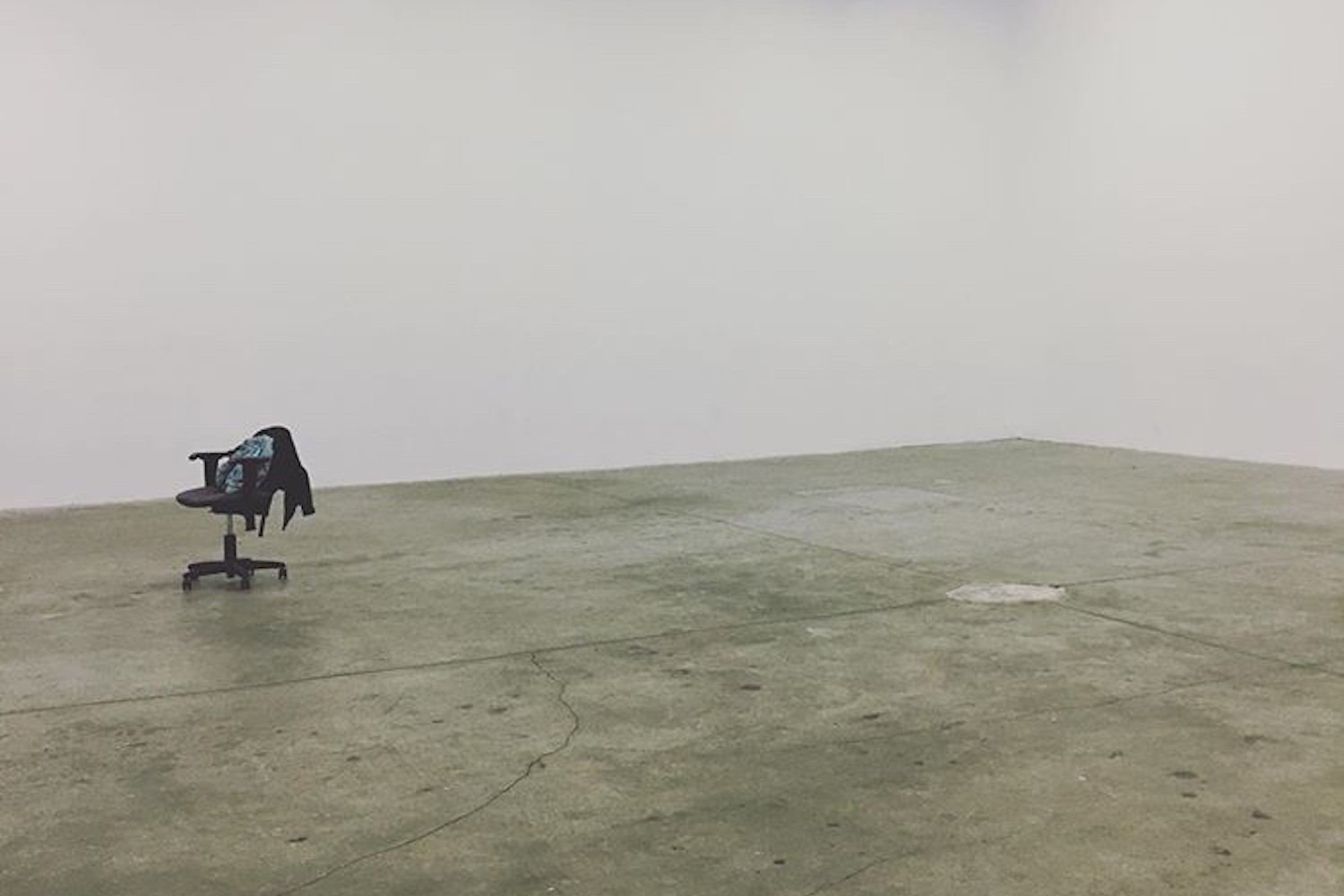I didn’t know just what to do
So I whispered “I love you”
And he said that he loved me too
And then he kissed me
– The Crystals, Then He Kissed Me (1963)
There is nothing more discomfiting than an obsolete term of endearment or desire: winsome, comely, fair, seemly, covenable, well-beseen, lovely, charming, chivalrous, handsome, a Romeo. It is hard to take seriously outdated words for beautiful people when Mr. Darcy from Pride and Prejudice has become Tom from Succession (Keira Knightley, thankfully, will forever remain the same, since we require stasis from women). Novelistic myths, so often relegated to the purview of nerdy young people, should not always be critiqued as nostalgic, since all of art and all of life is a novelistic myth. Ellen Berkenblit’s paintings are built from the lovely gaps within and between time, space, lips, metaphors, just as painting itself has been understood of late as a productively anachronistic medium. As Amy Sillman has written of Berkenblit, “Neither representations nor simulacra, these figures are displacements, emptied presences that allow something else to pour out: grief, ruins, memories, stories from old worlds…”1 And those old worlds have old words, the stuff of chivalric legends, old photographs, crushes, and Lynchian girl groups.
Romance is always about time, lost and found, and of course it is always a fantasy, for two people can never truly become one, and to insist that the other becomes one with you is an act of cruelty. The pleasures of love and its stories lie in the difficulty they create for knowing what is true, comprised as they are of archetypes, which are so true that we hysterically critique them as simulacra. As much as we hate to admit it, there is truth in archetypes, especially beautiful girls and strutting peacocks, who desire to move and never be reified. Berkenblit’s Guinevere and Romeo(2021) is titled impossibly because it enables avatars of love to move freely. Strictly speaking, they fictionally lived many hundreds of years apart, but here they are, together and reincarnated, exactly because they are amorous myths made for the express purpose of amorous collage. Lest, God forbid, we be too girly, we might cautiously recall here the surreal scrapbooks of Victorian women, which were never intended to be understood as art. A favorite is a page from the album of a wealthy British woman named Kate Edith Gough, in which the faces of ladies (Gough herself and her sister) have been pasted upon the bodies of ducks taken from an illustrated book. As Berkenblit has theorized, “I think a diary is pretty fucking awesome,” and it is awesome because in it, everything and everyone, all antiquated and contemporary discourses together on the same page, can be loved at once and privately, mysteriously compiled from public imagery.2
In its most effective iterations, love is unknowable even as it purports to have found the One among the many. When awash in a sea of maidens, babies, lightbulbs, myths, birds, lines, pigments, horsies and horse girls, cheetahs, and lips, what else is there to do when you do not know what to do? You can only declare your love confusedly, which does not lessen its truth. Berkenblit’s inscrutability is an act of Arthurian chivalry. She asks us to love what we do not understand, for that is the only way we can truly love. We are on our stomachs, legs in the air, filling the margins of our Lord of the Rings diaries with stars and hearts and kind knights, convinced no one will look our way, sure that nobody will ever get us. We are just too quirky. But when they finally do with a winsome smile directed our way, we can only hope that we retain our individual languages of beautiful nonsense.


